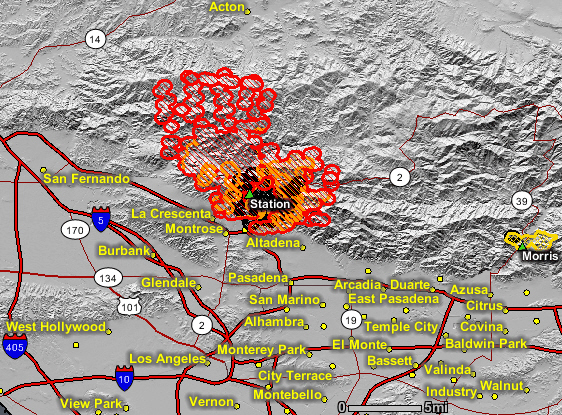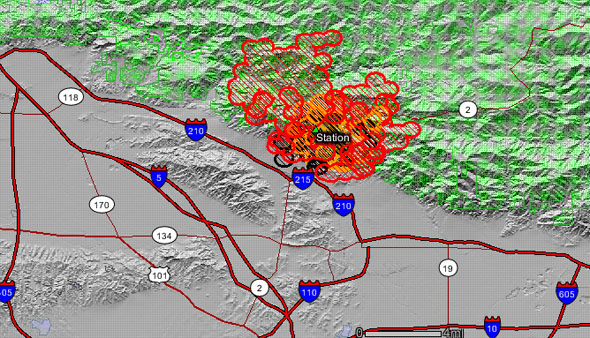The LA Times has the scoop on the fleet of air tankers being used in southern California:
“Despite state and local budget cuts, crews have the air support they need to handle the Station fire, officials said.
The state budget that Gov. Arnold Schwarzenegger signed last month canceled the contract for California’s largest firefighting tool, a DC-10 jet, to save taxpayers about $7 million. It was replaced with a contract for two DC-10s on a pay-as-you-go basis, but at a higher hourly rate. But after several fires hit Northern California earlier this month, authorities reversed that decision and signed a 90-day contract for the plane, which costs taxpayers an average of $43,404 a day.
“The determination was made that it would cost more to have it on an as-needed basis than on an exclusive-use contract,” said Cal Fire aviation chief Bill Payne.

For many Southern California residents whose homes were threatened by the Station fire, the appearance of the DC-10 Saturday at the Station fire’s northern and southern flanks came as a welcome relief. The plane could be seen making drops of its bright red flame retardant on the hills of the Angeles National Forest, then making sharp banks as it turned around for additional passes.
Before the arrival of the DC-10, officials had been relying on helicopters and some smaller fixed-wing aircraft to drop water and fire retardant on the Station fire.
The U.S. Forest Service contracts a Martin Mars air tanker, sometimes called a “Super Scooper,” which carries a flame retardant foam concentrate. But that plane has had mechanical problems and has not been used to fight the Station fire. In addition, Los Angeles County has a contract for two additional air tankers, which it leases from the government of Quebec. But those planes — which are CL-415s — are not available until Tuesday, said Payne.
Initially, officials thought the county’s planes would not arrive in the area until Thursday. But at a press conference today, officials said the CL-415s would be available starting Monday and that a second DC-10 also had been requested.
The state will have to pay for that second DC-10 on a pay-as-you-go basis. According to its agreement with the contractor, Victorville-based 10 Tanker Air Carrier, Cal Fire guarantees to pay the company a minimum of $66,060 a day for a minimum of five days, Payne said. That amounts to about $330,000.”
==============
The above article from the LA Times refers to the Martin Mars as a “Super Scooper”, but as we were reminded by Kelly Andersson, that term is usually reserved for the Bombardier (formerly Canadair) CL-415 or CL-215. We also corrected the name of the CL-415 in the article, incorrectly referred to as “CL-14”.
Kelly documented some of the history of the SuperScoopers in a 1998 article that appeared in Wildland Firefighter magazine.
Thanks Kelly.
By the way, the difference between the CL-215 and the 415 is that the 415 has turboprop engines, and has an updated cockpit, aerodynamics enhancements and changes to the water-release system as well.








